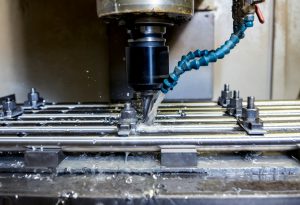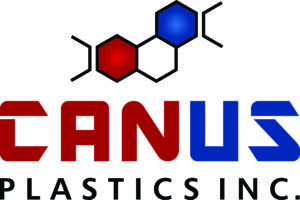Solutions for Common CNC Machining Issues

CNC machining is a critical component in the plastic fabrication industry, birthing precision parts that serve a host of applications. Imagine being able to create intricate shapes and designs with a machine that commands absolute accuracy—that’s the magic of CNC machining. But like any complex process, CNC machining isn’t without its challenges. It can face hiccups ranging from tool wear and overheating to precision errors. Whether you’re new to the process or a seasoned expert, these issues can throw a wrench in your operations if not adequately managed.
Our goal here is to put these problems under a microscope and provide clear, straightforward solutions. By understanding what causes these glitches and how to tackle them, you can ensure that your machining processes run smoothly, creating top-quality plastic products without a hitch. So, let’s dive into the common issues that CNC machining faces and how you can effectively keep them at bay.
Understanding Common CNC Machining Issues
The world of CNC machining, despite its advanced nature, can still hit a few bumps along the way. Common issues such as tool wear, overheating, and precision errors often crop up, affecting not just the process but also the quality of the final product.
1. Tool Wear: When tools wear out, they lose their ability to cut accurately, leading to compromised product quality. Regular monitoring and timely replacement of tools are crucial to maintaining optimal performance.
2. Overheating: Heat can be a major hurdle in CNC machining, causing tools to expand and possibly damaging the material being cut. Overheating often results from incorrect feed rates or insufficient cooling systems.
3. Precision Errors: These errors arise when there’s a misalignment or improper calibration of the CNC machine. Any loss in precision can mean more material waste and faulty components.
Understanding these problems is the first step toward resolving them. Each issue can have a significant impact, either slowing down the process or producing subpar parts, which no business wants. But fear not, for with each problem comes a solution that’s both effective and easy to implement, keeping your operations on track and your output top-notch.
Solutions for Tool Wear
Tool wear can really throw off a machining process, but selecting the right tools can make all the difference. It’s essential to use tools specifically designed for the type of plastic you’re working with. Not every tool is suitable for every material, and using the wrong one can speed up wear and tear.
To keep your tools in top shape, consider these practices:
– Regularly inspect tools for signs of wear and replace them promptly.
– Schedule maintenance checks to catch issues before they develop.
– Implement a tool monitoring system to track tool life and performance.
Using these strategies not only extends the lifespan of your tools but also ensures that your CNC machining runs smoothly and continues to produce high-quality parts. That’s where precision and efficiency in production find their balance, letting your operations remain seamless and effective.
Managing Overheating Problems
Overheating in CNC machines can be quite the setback, causing not just operational issues but potential damage to both tools and materials. When heat builds up, tools can expand, materials might warp, and the entire process becomes less efficient. Overheating typically arises from incorrect feed rates or poor cooling systems, making it crucial to address these sources head-on.
Here are steps to manage overheating effectively:
– Adjust Feed Rates and Speeds: Matching the correct speed and feed rate to the material can drastically reduce heat buildup, helping maintain stable temperatures.
– Implement Effective Cooling Systems: Using coolants can help disperse heat quickly. Proper ventilation and the right type of coolant, suited for specific plastics, also enhance machine performance.
– Schedule Regular Checks: Keep an eye on the machinery to ensure that cooling components work well and aren’t blocked by dust or debris.
Imagine cooking a meal where the oven temperature goes unchecked; overheating can burn the meal. The same goes for CNC machines—regular monitoring ensures that everything stays at its best, delivering precise and quality results.
Ensuring Precision and Accuracy
Precision and accuracy form the backbone of effective CNC machining. Errors here can snowball into larger problems, leading to wasted materials and faulty products. Precision errors commonly occur due to misalignment or improper machine calibration. However, these issues can be easily tackled with regular checks and maintenance.
For achieving precision every time:
– Calibrate Regularly: Proper calibration ensures that the machine operates as intended. Keep calibration tools handy and use them often, especially after any significant work.
– Maintain Setup Integrity: Ensure setups are free from dust and well-aligned. Use high-quality fixtures and clamps to hold materials in place securely.
– Review Output: Regularly checking the machine’s output allows early detection of errors, preventing larger problems down the line.
Think of it like tuning a musical instrument. Just as musicians regularly tune their instruments to ensure perfect sound, regular maintenance and calibration keep CNC machines running with precision.
Preventing Material Deformation
Material deformation can be a tricky issue in CNC machining, often caused by incorrect clamping or feed rates. Imagine trying to write a perfect script with a wobbly pen; similarly, poor machine setup can warp the final product, resulting in wasted materials. However, by taking a few calculated steps, you can easily sidestep this problem.
To prevent deformation:
– Optimize Clamping Pressure: Use just the right amount of pressure. Too much can distort the material, while too little might lead to movement during machining.
– Get the Feed Rate Right: Calculate and set the correct feed rates for different materials to avoid putting unnecessary stress on the workpiece.
– Use Simulations and Test Runs: Before starting the main operation, run a simulation or a test cut. This practice can save you from costly mistakes and help adjust settings as needed.
By treating each machining job like a rehearsed operation, ensuring everything from setup to execution is just right, you’ll minimize deformities and maximize quality output.
Finally, maintaining smooth CNC machining not only requires the right tools and practices but also involves leveraging expert services. Engaging with professionals who understand the intricacies of CNC processes can save time, reduce errors, and ensure high-quality results every time.
To ensure your CNC machining processes run smoothly and produce top-notch results, it’s essential to address common challenges like tool wear, overheating, and precision errors. For personalized solutions and expert guidance, trust the experienced team at Canus Plastics Inc. Dive into our comprehensive CNC machining services to see how we can assist your business with all its needs. Learn more about how a dedicated plastic fabrication company can elevate your production capabilities today.

